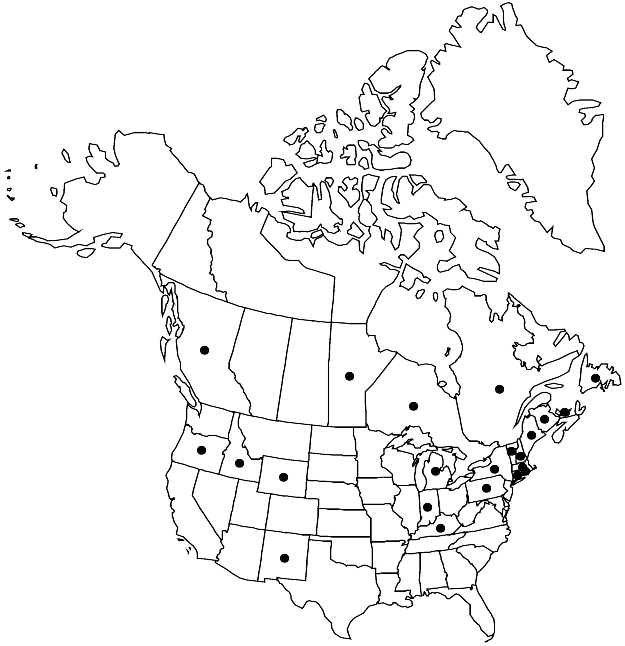Nasturtium microphyllum
Fl. Germ. Excurs., 683. 1832.
Plants glabrous throughout or sparsely pubescent. Stems (1–) 2–10 (–18) dm. Cauline leaves: petiole not winged, base auriculate; blade (3–) 5–9 (–11) -foliolate, (1.5–) 2.5–10 (–15) cm; lateral leaflets sessile or petiolulate, rachis not winged, blade smaller than terminal; terminal leaflet (or simple blade) suborbicular or oblong, (0.6–) 1.5–3.5 (–4.5) cm × (4–) 8–20 (–25) mm, base obtuse, cuneate, or subcordate, margins entire or repand, apex obtuse. Fruiting pedicels divaricate or descending, straight or, occasionally, recurved, (7–) 9–21 (–25) mm. Flowers: sepals 2.5–4 × 1–1.5 mm; petals white or pink, spatulate or obovate, 4.5–6 × 1.5–3 mm, (base to 1 mm), apex rounded; filaments 2.5–3.5 mm; anthers 0.7–1 mm. Fruits 1.4–2.2 (–2.7) cm × 1–1.5 (–1.8) mm; ovules 30–38 (–40) per ovary; style 0.5–1.5 (–2) mm. Seeds uniseriate, reddish-brown, ovoid, (0.8–) 1–1.2 × (0.6–) 0.7–0.8 (–0.9) mm, moderately reticulate with (75–) 100–150 (–175) areolae on each side. 2n = 64.
Phenology: Flowering Jan–Aug.
Habitat: Lake margins, streams, ponds, springs, river shores, seeps, swales, wet meadows
Elevation: 0-1500 m
Distribution

Introduced; B.C., Man., N.B., Nfld. and Labr. (Nfld.), Ont., P.E.I., Que., Conn., Idaho, Ind., Ky., Maine, Mass., Mich., N.H., N.Mex., N.Y., Oreg., Pa., R.I., Vt., Wyo., Europe, also elsewhere in the New World, Australia
Discussion
Selected References
None.
Lower Taxa
"elongated" is not a number."thick" is not a number."dm" is not declared as a valid unit of measurement for this property."dm" is not declared as a valid unit of measurement for this property.